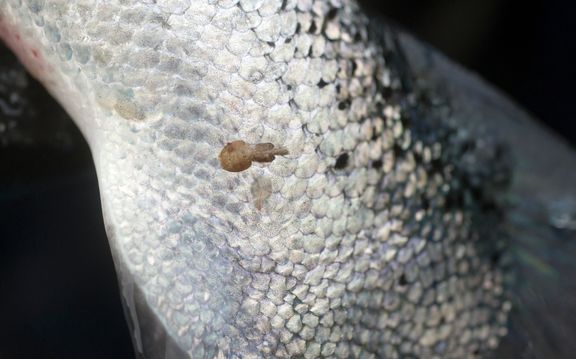Nofima study sheds light on host-parasite dynamics, aiming to bolster resistance in farmed salmon.
New research led by Nofima, the Norwegian Institute of Food, Fisheries and Aquaculture Research, has uncovered the role chemical signals play in attracting sea lice to Atlantic salmon, offering insights that could shape the future of aquaculture.
The study, part of the CrispResist project, explores how salmon secrete substances that act as attractants—known as kairomones—helping sea lice locate their hosts during their free-swimming larval stage. The findings could aid in breeding salmon with enhanced resistance to these pervasive parasites.
“Chemical signalling is believed to play a key role in host-parasite communication, and scientists have now confirmed this,” said Nicholas Robinson, project coordinator at Nofima.
Researchers tested water conditioned with various fish species, including Atlantic and Pacific salmon, to study the response of sea lice larvae. The analysis revealed that kairomones emitted by Atlantic salmon stimulate the activity of the copepodite larvae, guiding them toward their hosts.
Interestingly, the same water samples also contained compounds that deter lice, indicating that Atlantic salmon possess some innate ability to repel the parasites.
“Overall, the findings suggest that host-parasite communication is highly complex and likely involves multiple cues,” said senior fish health scientist Aleksei Krasnov, who was instrumental in the chemical analyses.
The CrispResist project brings together scientists from Norway, the UK, the USA, Canada, Sweden, and Australia to investigate why certain Pacific salmon species exhibit natural resistance to sea lice while Atlantic salmon remain highly susceptible.
The team identified differences in the chemical composition of mucus secreted by salmon families with high versus low resistance to lice. Notably, mucus from less resistant salmon had a stronger stimulatory effect on lice.
“A key objective is to identify the genes and mechanisms behind these differences and apply this knowledge to enhance resistance in Atlantic salmon,” Robinson explained.
The discovery of kairomones and their role in lice behaviour opens the door for targeted molecular research. According to Krasnov, future studies will focus on developing tests to detect and manipulate these compounds, potentially reducing lice infestations in farmed salmon.
The CrispResist initiative, funded by the Norwegian Seafood Research Fund (FHF), collaborates with 12 partners from science and industry, including Rothamsted Research in the UK, the University of Gothenburg in Sweden, and the Bigelow Laboratory of Ocean Science in the US.









